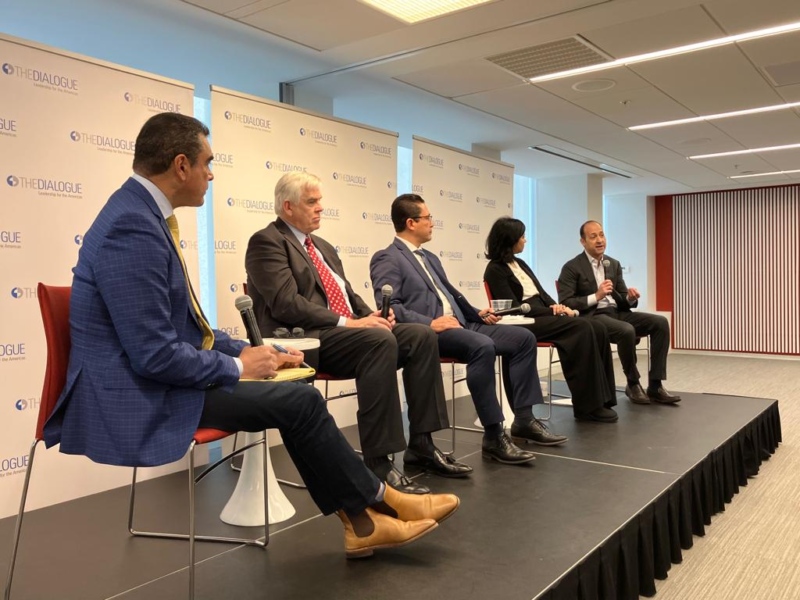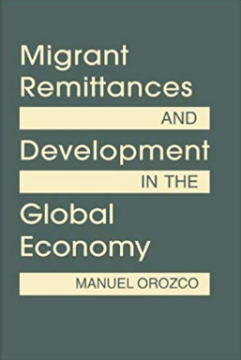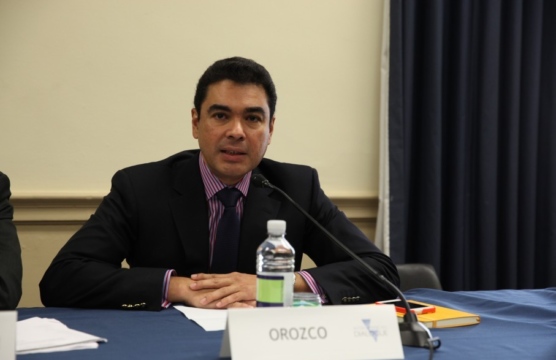The Earthquake’s Impact on Remittances
The earthquake in Haiti has exacerbated an existing distress during the international recession and increased uncertainty of what to do and how to help.
2023 was an important year for remittances in Latin America and the Caribbean (LAC) as migrants in the US and other countries continued to support their families back home. At the same time, costs to send remittances in LAC have decreased from 8.74 percent in 2001 to 3.89 percent in 2024 - inching closer to the UN’s global target of less than three percent by 2030. In 2024, developments in regulation, technology, politics, and migration are set to create a new operating environment for remittance services providers (RSPs) in the money transfer industry.
On February 16, 2024, the Inter-American Dialogue’s Migration, Remittances, and Development program invited representatives from across the remittance industry to discuss the potential for developments in the industry and to discuss their outlook for 2024.
Opening the discussion, Manuel Orozco, director of the Migration, Remittances, and Development program, explained that while remittances to the region continue to grow, three fourths of this growth can be explained by increases in migration. Orozco then continued to ask the panelists whether they expected remittances to continue growing through 2024 or whether they would slow considering cooling migration, US elections, and regulatory proposals.
In her remarks, Saema Somalya, executive vice president at Remitly, noted that policy proposals that increased remittance costs would be counterproductive. Somalya pointed out that money will continue to flow regardless and that higher prices could push flows into informal money transfer systems that are not subject to regulation. Addressing 2024 growth, Somalya recognized the growing importance of building trust with customers and highlighted the role of availability in growth. For instance, in countries where banking infrastructure is low, digital options may provide access to remittance for those in “banking deserts” where physical cash is scarce.
CEO and Co-founder of Viamericas Paul Dwyer viewed migration as the biggest driver of growth alongside the US job market and wages. For the industry, Dwyer views a central bank digital currency that is widely circulated as the ideal end point for remittance reception and pointed to Brazil’s “Pix” payments system as an example. However, he recognized that as inter-bank transfers are expanded and perfected, legacy RSPs will face challenges to adapt. Dwyer indicated that proposals to tax remittances will not only increase emigration from LAC, but also adversely affect the economy in general. For now, he doesn’t see technology like Bitcoin disrupting the industry, and challenged his peers to embrace their customers’ long-term economic objectives rather than hyper focusing on the transactions themselves.
Alberto Laureano, CEO of DolFin Tech, considers a multichannel approach as key to growth in 2024, explaining that customers want to be served in multiple and diverse ways. DolFin Tech is thus not only providing remittance services to migrants, but has instead developed products like international bill payments and has looked to serve migrants’ domestic financial needs. Laureano underscored that many migrants still prefer the trust built by sending physical cash and that growth in digital payments systems has been slower on the sending versus the receiving end of transactions. For this reason, he sees that for any digital payment methods like mobile wallets, there need to be on- and off-ramps for cash.
Chief Commercial Officer (CCO) of TransNetwork LLC, Gerardo Amelio, has noticed an evolution in the role of cash in remittances. The largest holders of physical cash have traditionally been banks, but this has changed to retailers and echoed the determination that migrants still frequently use cash. Acknowledging the increase in digital payment methods like mobile wallets, Amelio said that the industry is balancing between quickly capitalizing on innovations and making sounder investments. In his view, newer product offerings and their vendors do not always have the necessary knowledge of the regulatory and market environment and thus legacy players need to be cautious. However, Amelio noted that these players are making efforts to provide more choices to remittance beneficiaries.
In the Q&A portion of the event, panelists discussed the potential of entering heavily sanctioned outbound corridors like Cuba and Venezuela. Panelists agreed that while both markets are difficult to enter, Venezuela is more plausible than Cuba. While the demand for expanded remittance services exists for both corridors, permissions and sanctions have been less consistent in Cuba than in Venezuela. Despite this, the panel remained skeptical that the industry would overcome risk aversion to entering these corridors.
The earthquake in Haiti has exacerbated an existing distress during the international recession and increased uncertainty of what to do and how to help.
How do patterns of migration and remittances differ across regions? What kinds of frameworks support the contributions of remittances to local development?
On February 24th, the Inter-American Dialogue held its annual event on Remittances to Latin America and the Caribbean.
 Inter-American Dialogue
Inter-American Dialogue

